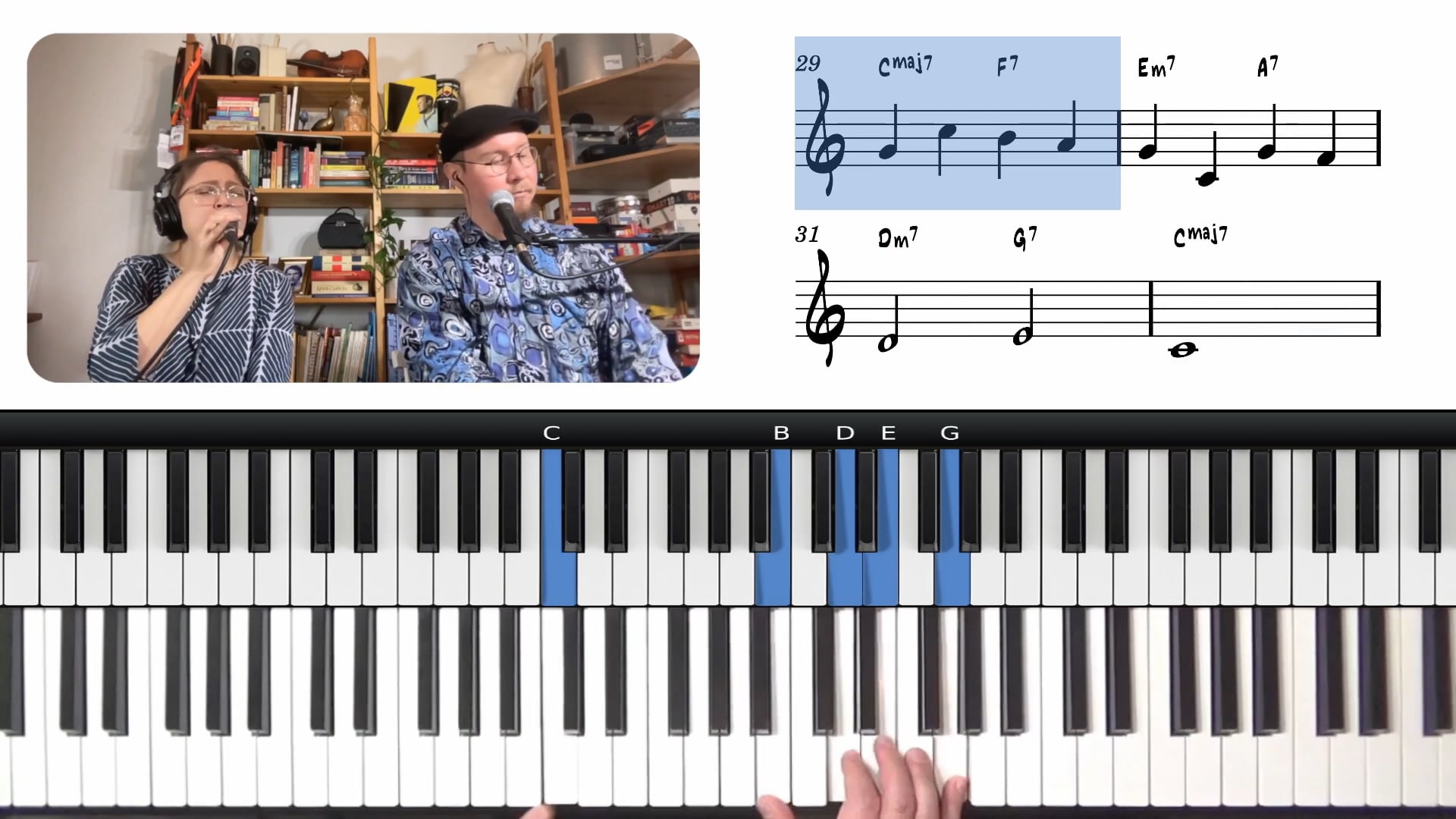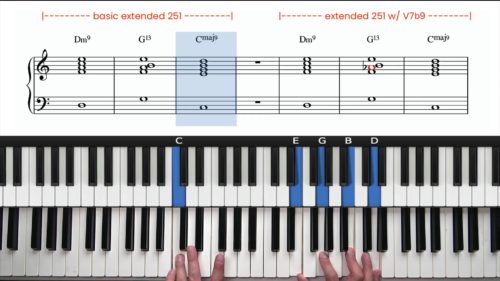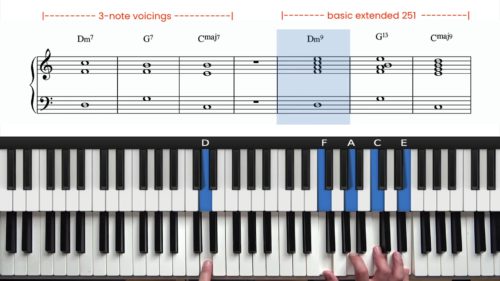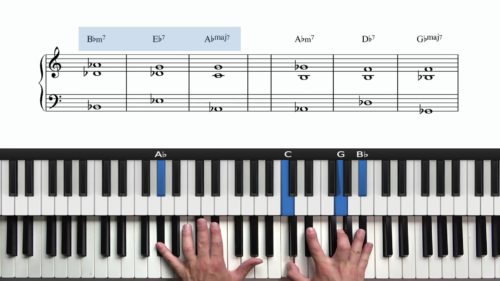Voicings Techniques For Jazz Singers
Welcome to the second lesson in our vocal accompaniment course. In this session, we dive into the world of jazz voicings, focusing on how to build harmonically rich yet supportive textures that elevate the vocalist’s performance.
In This Lesson You’ll Learn:
- How to use 3-note voicings that sound full yet leave space.
- Practical Drop 2 voicing exercises for accompaniment.
- Building 251 progressions with minimal movement.
- Understanding inner voice leading for smoother transitions.
- Adding chord extesions (9 / 11 / 13) and chord alterations (b9 / #9 / #11 / b13)
"There Will Never Be Another You" – Vocal Accompaniment
Using “There Will Never Be Another You” as our example tune, we explore how to develop your voicings from simple three-note shapes to more advanced drop 2 configurations which incorporate chord extensions and chord alterations.
This lesson is ideal for students who are ready to go beyond basic voicings and explore more sophisticated sounds, while still maintaining the clarity and support essential in vocal accompaniment.
Accompaniment Foundations: 3-Note Voicings
We begin with 3-note voicings, which form the backbone of effective accompaniment. These voicings include only the core chord tones which are root, 3rd, and 7th.
These three tones convey the essential harmonic function of the chord and serve as a clear and non-intrusive foundation under the vocalist. You’ll hear how these voicings work beautifully in both major and minor 251 progressions such as D-7 to G7 to Cmaj7, and D-7b5 to G7 to C-7.
As discussed in the video, it’s often more supportive to use the 6th instead of the major 7th in minor chords, particularly when the melody features the root note, to avoid clashing and provide a warmer, rounder sound.
Adding Colour: 9ths, 13ths, and Alterations
Once you’re confident with 3-note voicings, the next step is to introduce color tones such as the 9th, 13th, and altered extensions (b9, #9, b13, #11). This enhances the harmonic richness without overwhelming the melody or vocalist.
We demonstrate how these additional tones fit into major and minor 251s and how to tastefully introduce inner voice movement — subtle note shifts within the chord — to create forward motion and interest. This step also shows how changes in extensions can reinforce harmonic direction and cue resolutions, such as adding tension in a G7 chord to signal a return to Cmaj7 or C-6.
Drop 2 Voicings For Vocal Accompaniment
Drop 2 voicings are among the most versatile and essential voicing tools for jazz pianists. They maintain all the information of the three-note voicings, but rearranged to create a more open, spread-out sound by dropping the second-highest note of a chord an octave lower.
You’ll learn how to:
- Convert close position voicings into drop 2 voicings
- How to use drop 2 voicings in major and minor 251s
- Apply them in both static and moving harmonic contexts
This section highlights how drop 2 voicings offer space and clarity, allowing your sound to breathe and interact beautifully with the vocalist.
Applying the Voicings: “There Will Never Be Another You”
Throughout the lesson, we apply the concepts in a performance of “There Will Never Be Another You.” The tune is explored in both the key of C and the more traditional key of Eb, giving you flexibility and context for real-world performance situations.
Each iteration of the tune builds in complexity:
- First, using only 3-note voicings
- Then adding color tones and inner voice movement
- Finally, incorporating full drop 2 voicings with subtle variations
The vocalist provides valuable feedback along the way, affirming which choices feel most supportive and inspiring.
Rhythmic Comping For Jazz Vocalists
This lesson concludes with a preview of Part 3, where we’ll explore rhythmic approaches. You’ll learn how to craft compelling grooves, support phrasing, and communicate musically with your singer through rhythmic interplay.
Practice Tips
-
Master 3-Note Voicings – Practice D-7 to G7 to Cmaj7 and D-7 to G7 to C-6 using root, 3rd, and 7th. Aim for clarity and balance.
-
Explore Drop 2 Voicings – Convert close voicings by lowering the second-highest note an octave for a fuller, more open sound.
-
Introduce Color Gradually – Add the 9th or 13th one voice at a time to build harmonic complexity without cluttering the texture.
- Practice in Different Keys – Work through voicings in both C and Eb to become comfortable transposing and adapting to different singers' needs.







